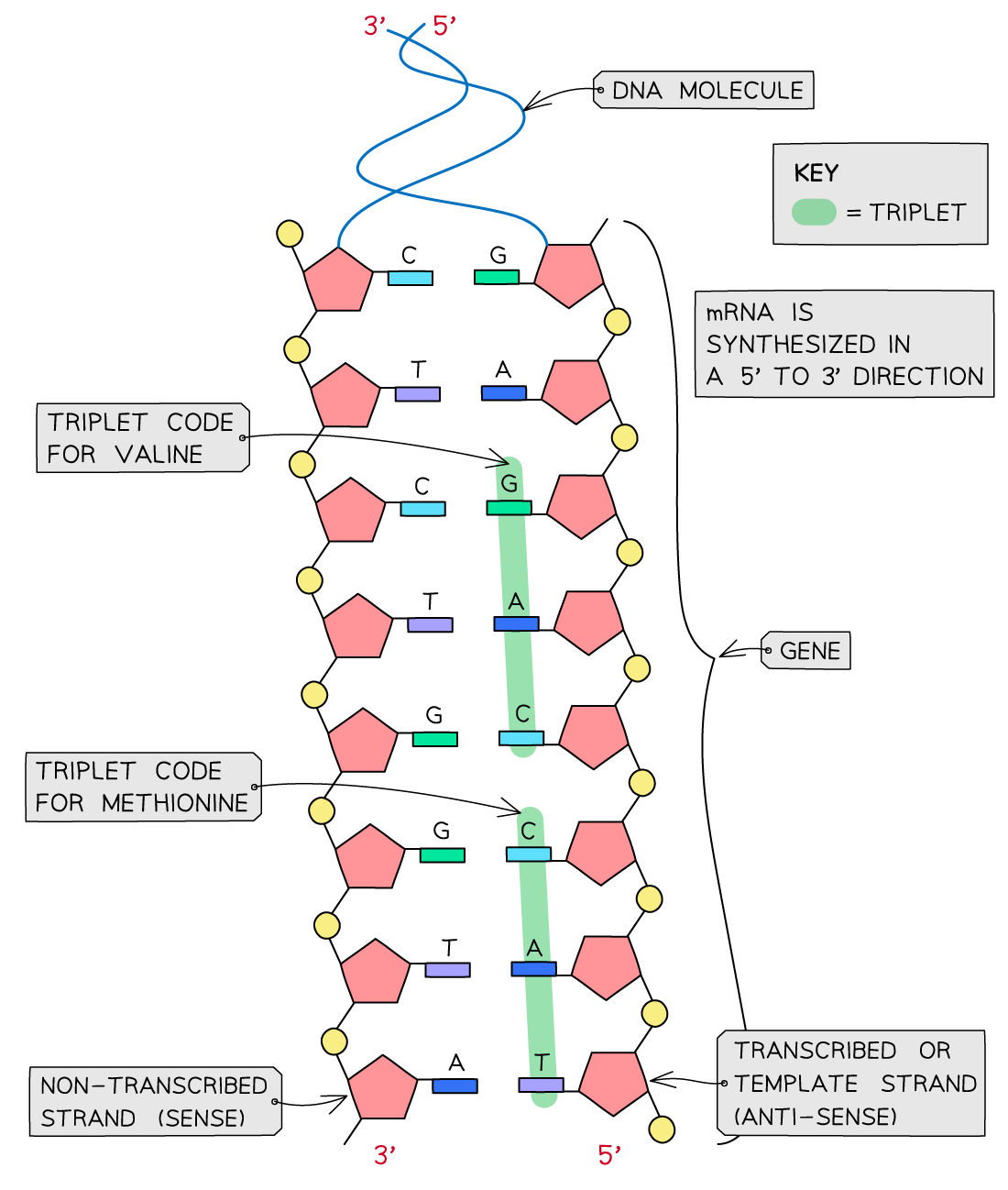- 翰林提供学术活动、国际课程、科研项目一站式留学背景提升服务!
- 400 888 0080
CIE A Level Biology复习笔记6.2.2 The Universal Genetic Code
The Universal Genetic Code
- A gene is a sequence of nucleotide bases in a DNA molecule that codes for the production of a specific sequence of amino acids, that in turn make up a specific polypeptide (protein)
- The DNA nucleotide base code found within a gene is a three-letter, or triplet, code
- Each sequence of three bases (in other words each triplet of bases) codes for one amino acid
- These triplets of bases are known as codons (each codon codes for a different amino acid – there are 20 different amino acids that cells use to make up different proteins)
- For example:
- CAG codes for the amino acid valine
- TTC codes for the amino acid lysine
- GAC codes for the amino acid leucine
- CCG codes for the amino acid glycine
- Some of these triplets of bases code for start (TAC – methionine) and stop signals
- These signals tell the cell where individual genes start and stop
- This ensures the cell reads the DNA correctly (the code is non-overlapping) and can produce the correct sequences of amino acids (and therefore the correct protein molecules) that it requires to function properly
- There are four bases so there are 64 different triplets possible (43), yet there are only 20 amino acids that commonly occur in biological proteins. This results in multiple codons coding for the same amino acids thus the code is said to be degenerate (this can limit the effect of mutations)
- The genetic code is universal, meaning that almost every organism uses the same code (there are a few rare and minor exceptions)
- This means that the same codons code for the same amino acids in all living things (meaning that genetic information is transferable between species)

A DNA molecule with the triplet code for the codons of the start amino acid (methionine) and valine
Exam Tip
Be careful to determine whether you have been given DNA or mRNA codons.
转载自savemyexams

早鸟钜惠!翰林2025暑期班课上线

最新发布
© 2025. All Rights Reserved. 沪ICP备2023009024号-1








